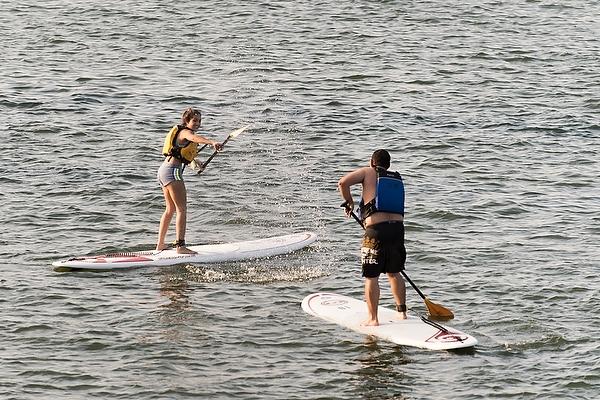Though extreme weather has been a common result of the planet’s rising temperature, one natural occurrence, called meteotsunamis, has only recently been studied by scientists.
A meteotsunami occurs when convective storms moving quickly over water cause a rapid change in air pressure which displaces the water, according to the National Ocean Service. This process generates waves that can cause damage to coastal areas and put people at risk of serious harm or, in some cases, death.
In fact, a meteotsunami, generated by a 15-minute storm, caused the deaths of seven people at Lake Michigan in 2003, the Sea Grant Institute at the University of Wisconsin reported. The meteotsunami generated rip currents that pulled people away from the shore and put them in a situation that increased their risk of drowning. After the storm passed, the weather became agreeable and sunny. This led people to mistakenly believe it was safe to swim, so they went back into the water.
Since then, researchers have been doing what they can to learn more about this natural phenomenon. Adam Bechle, the coastal resilience outreach specialist at Sea Grant, emphasized that a meteotsunami is not the same as a tsunami caused by seismic activity.
Instead, it is formed by meteorological events such as fast-moving storms that move over a body of water, according to the Cooperative Institute for Great Lakes Research. But both events result in the displacement of water which leads to increased wave height.
“People often think of earthquake tsunamis [when hearing the term meteotsunami],” Bechle said. “But, the resulting change to water surface is similar but [on a] smaller scale.”
Though meteotsunamis have recently had increased exposure and have been studied in more depth, they are not new events.
Chin Wu, a professor at UW and expert on the subject, said meteotsunamis have been occurring for decades, but only recently have they been given a name.
“Meteotsunamis are not a new phenomenon,” Wu said. “We just haven’t been aware of it [until recently]. We always thought of [them] as a storm until three to five years ago.”
Climate change may have an impact on the occurrence and likelihood of meteotsunamis, according to research by Wu and other scientists. A simulation of future climate scenarios over the U.S. showed that favorable days for weather that would be able to form meteotsunamis would likely increase. These scenarios suggest that the Great Lakes region could experience an increased frequency of meteotsunamis or that they may occur earlier in the warm season.
But Bechle hesitated to confirm if climate change would affect the frequency of meteotsunamis in the Great Lakes region.
“It is hard to speculate whether climate change will affect the occurence [of meteotsunamis],” Bechle said. “Because, it is not how many thunderstorms occur but their speed. [Climate change] could affect [meteotsunami] occurrence, but I could not say with certainty.”
With the death of the Lake Michigan swimmers in mind, Bechle said conditions may seem safe after a storm has passed, but in the case of meteotsunamis, it is often the hours after a storm has passed that the water is most dangerous.
Bechle said the greatest danger is after the storm passes and beach-goers think it is safe to return to the water to swim. He said that drowning happens when storms pass and reflective waves come back in.
A definitive warning system for predicting meteotsunamis has yet to be developed, according to CIGLR. This is due to challenges concerning the rapid variability of atmospheric and hydrodynamic conditions.
“It is difficult to forecast [meteotsunamis] because they occur with very fast moving thunderstorms,” Bechle said. “[These] much more rapid events add complexity as to how they are able to be forecasted.”
Wu stressed the importance of promoting public awareness and education of meteotsunamis. The term has gained increased recognition in recent years, and education efforts have been put forth to create and refine forecasting of the events.
There has been a development of meteotsunami forecasting and warning through the National Weather Service, but Wu emphasized that it is new knowledge, and therefore scientists have the difficulty of now having to predict and focus the forecasting of the quick moving meteotsunamis.
“Now, people pay more, stronger attention [to meteotsunamis],” Wu said. “The question left is ‘How do we prepare for it?’”
Wu’s hope is that as people hear and learn about meteotsunamis, they begin to research them and tell their peers, colleagues and family to spread the word. The people who learn more as a secondary result will then know how to react in situations that may produce meteotsunamis.
This process will help to increase awareness and hopefully prevent people from being placed in dangerous, and potentially deadly, situations that would cause them or others harm.
“I cannot see myself ignoring [meteotsunamis],” Wu said. “There is a lot of education on tsunamis, and [we] know the impact that tsunamis can have. We cannot excuse ourselves to not pay attention to this. People should be educated, so they do not suffer anymore.”


